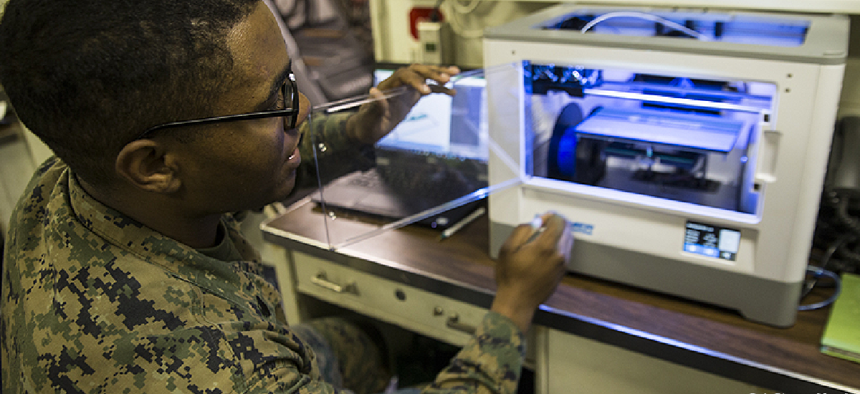'Fix it forward'
3-D printers have been a game changer for deployed Marine Expeditionary Units, which often need a replacement part quickly to keep a mission moving.
3-D Printing for Replacement F-35 Parts
U.S. Marine Corps, 31st Marine Expeditionary Unit, Combat Logistics Battalion 31
3-D printers have been a game changer for deployed Marine Expeditionary Units (MEUs), which often need a replacement part quickly to keep a mission moving.
“As a commander, my most important commodity is time,” said Lt. Col. Richard Rusnok, commanding officer of Marine Fighter Attack Squadron 121. “Although our supply personnel and logisticians do an outstanding job of getting us parts, being able to rapidly make our own parts is a huge advantage.”
3-D printers use software to break down an object into thin slices and then layer the slices on top of one another to create the needed object. For the Marines, that could include a tool to make repairs or the replacement part itself.
Creating such temporary solutions fits in well with the MEUs’ approach to their mission, said Marine Corps Chief Warrant Officer 2 Daniel Rodriguez, Combat Logistics Battalion 31’s maintenance officer.
“While afloat, our motto is ‘Fix it forward,’” Rodriguez said. “3-D printing is a great tool to make that happen. CLB-31 can now bring that capability to bear exactly where it’s needed most — on a forward-deployed MEU.”
Earlier this year, when an F-35 fighter jet’s plastic bumper wore out, the squadron used CLB-31’s 3-D printer to make a new bumper. The process for receiving approval, printing and repairing the aircraft took only days — a significant improvement over the previous practice of waiting for a part to arrive from halfway around the world.
Visit GCN.com for all the 2018 Public Sector Innovation winners




